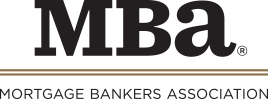
Fed Holds Steady, Sets Plate for June Rate Increase
The Federal Open Market Committee, as expected, left the federal funds rate alone at its policy meeting yesterday, but clearly indicated that it will pull the trigger again at its next meeting in June.
“The labor market has continued to strengthen and that economic activity has been rising at a moderate rate,” The FOMC said in its statement yesterday. “On a 12-month basis, both overall inflation and inflation for items other than food and energy have moved close to 2 percent. Market-based measures of inflation compensation remain low; survey-based measures of longer-term inflation expectations are little changed, on balance.”
The Fed kept its federal funds rate at between 1-1/2 and 1-3/4 percent. But Mortgage Bankers Association Chief Economist Mike Fratantoni said that is likely to change when the FOMC meets again June 12-13.
“Inflation is picking up speed,” Fratantoni said. “The Fed’s preferred measure of inflation is now close to target, and the job market remains exceptionally strong, with all indications that wage growth is beginning to accelerate. While the Fed did not increase rates at their May meeting, they did acknowledge these trends in the data, which signals to us that future rate hikes are coming. We expect three additional hikes this year arriving once each quarter, and three more rate hikes in 2019.”
Fratantoni noted longer-term rates, including mortgage rates, have continued to inch up, reflecting the strong economy and market expectations of future rate hikes. “We continue to expect that higher rates will be only a modest headwind for the housing market, with higher wages and rapid home price growth being stronger tailwinds,” he said. “We’re holding to our forecast of roughly 5 percent growth in purchase originations in 2018 compared to last year.”
The FOMC statement appears below and can be accessed online at https://www.federalreserve.gov/newsevents/pressreleases/monetary20180502a.htm.
“Information received since the Federal Open Market Committee met in March indicates that the labor market has continued to strengthen and that economic activity has been rising at a moderate rate. Job gains have been strong, on average, in recent months, and the unemployment rate has stayed low. Recent data suggest that growth of household spending moderated from its strong fourth-quarter pace, while business fixed investment continued to grow strongly. On a 12-month basis, both overall inflation and inflation for items other than food and energy have moved close to 2 percent. Market-based measures of inflation compensation remain low; survey-based measures of longer-term inflation expectations are little changed, on balance.
“Consistent with its statutory mandate, the Committee seeks to foster maximum employment and price stability. The Committee expects that, with further gradual adjustments in the stance of monetary policy, economic activity will expand at a moderate pace in the medium term and labor market conditions will remain strong. Inflation on a 12-month basis is expected to run near the Committee’s symmetric 2 percent objective over the medium term. Risks to the economic outlook appear roughly balanced.
“In view of realized and expected labor market conditions and inflation, the Committee decided to maintain the target range for the federal funds rate at 1-1/2 to 1-3/4 percent. The stance of monetary policy remains accommodative, thereby supporting strong labor market conditions and a sustained return to 2 percent inflation.
“In determining the timing and size of future adjustments to the target range for the federal funds rate, the Committee will assess realized and expected economic conditions relative to its objectives of maximum employment and 2 percent inflation. This assessment will take into account a wide range of information, including measures of labor market conditions, indicators of inflation pressures and inflation expectations, and readings on financial and international developments. The Committee will carefully monitor actual and expected inflation developments relative to its symmetric inflation goal. The Committee expects that economic conditions will evolve in a manner that will warrant further gradual increases in the federal funds rate; the federal funds rate is likely to remain, for some time, below levels that are expected to prevail in the longer run. However, the actual path of the federal funds rate will depend on the economic outlook as informed by incoming data.
“Voting for the FOMC monetary policy action were Jerome H. Powell, Chairman; William C. Dudley, Vice Chairman; Thomas I. Barkin; Raphael W. Bostic; Lael Brainard; Loretta J. Mester; Randal K. Quarles; and John C. Williams.”
